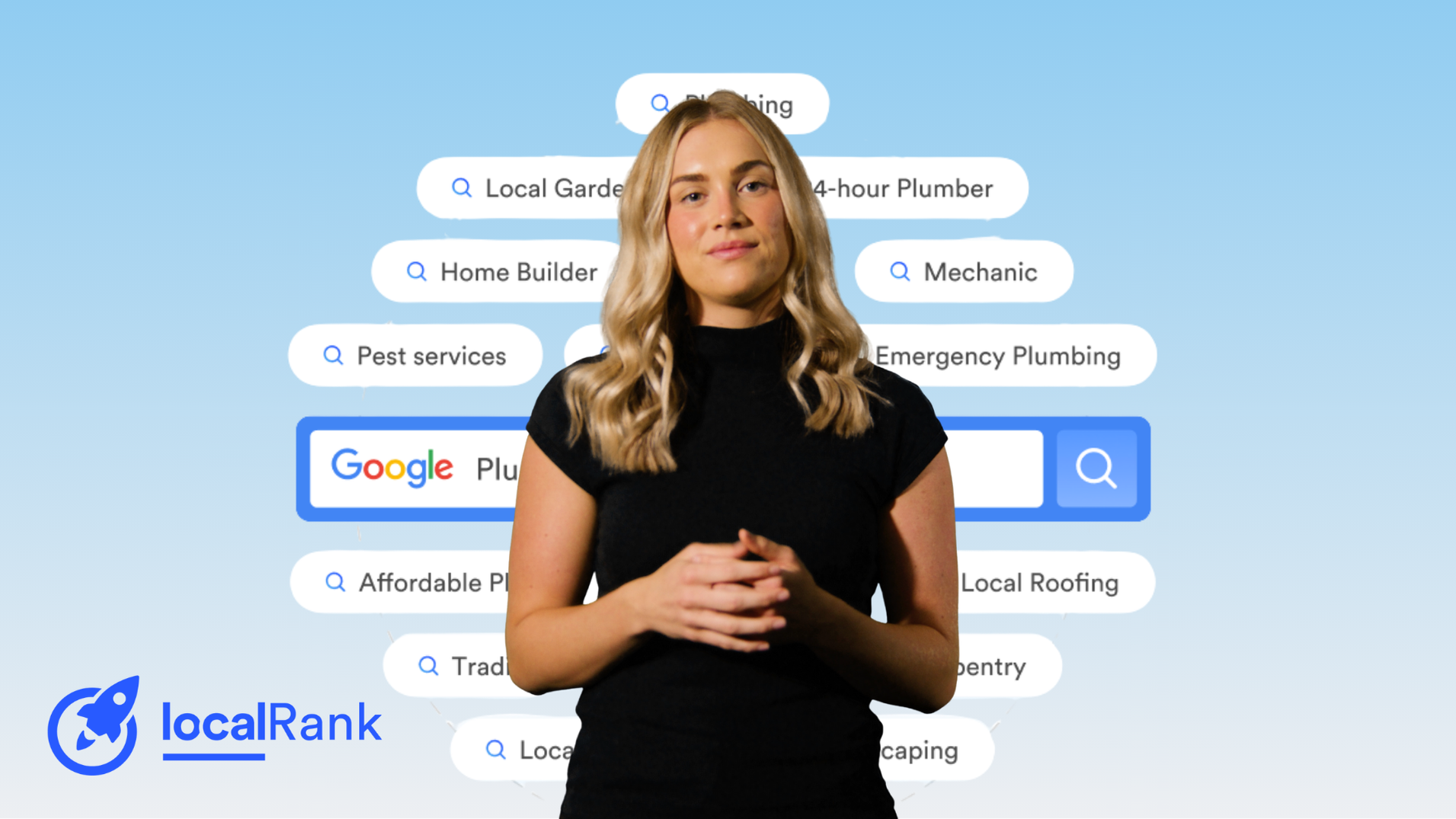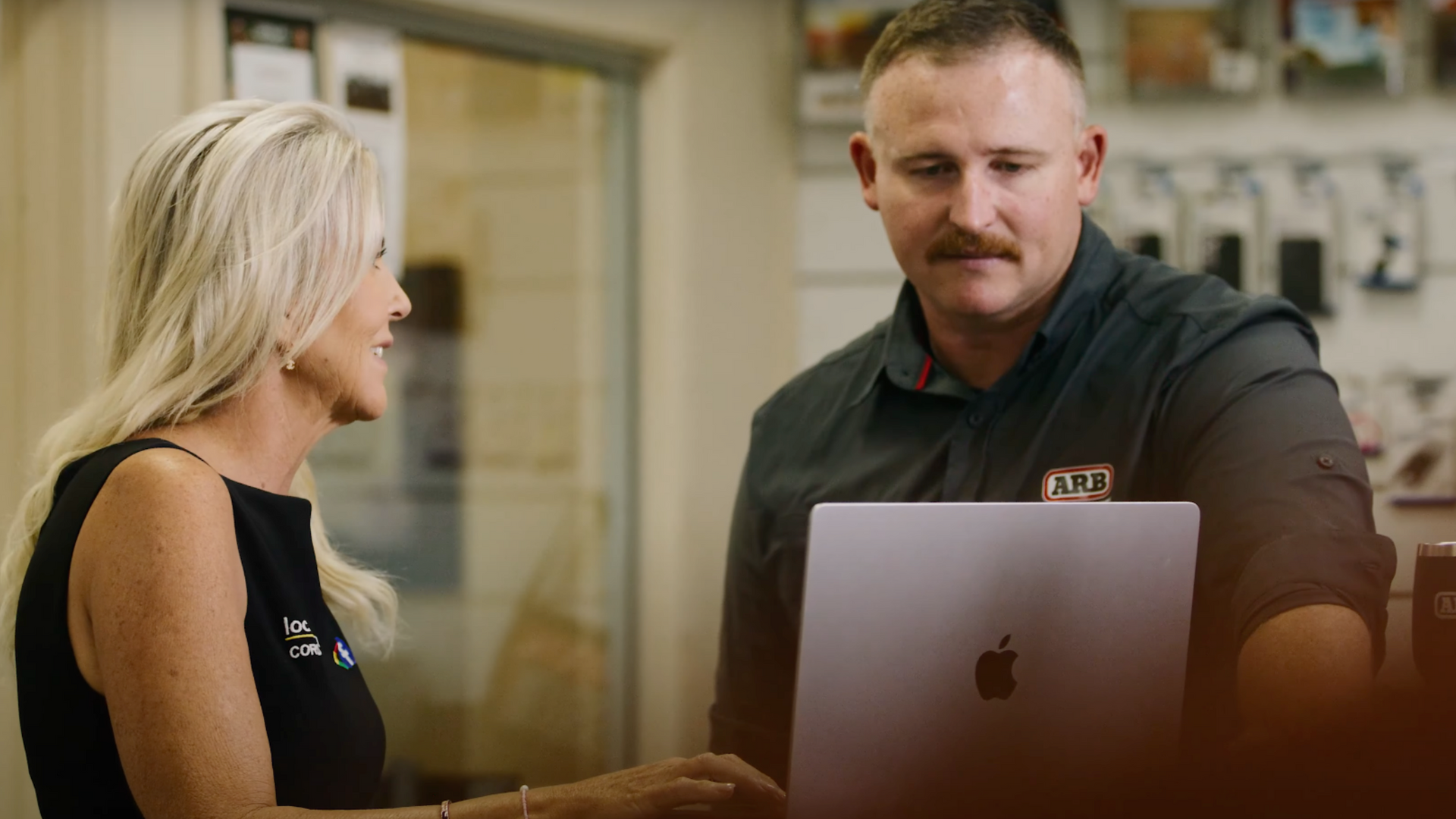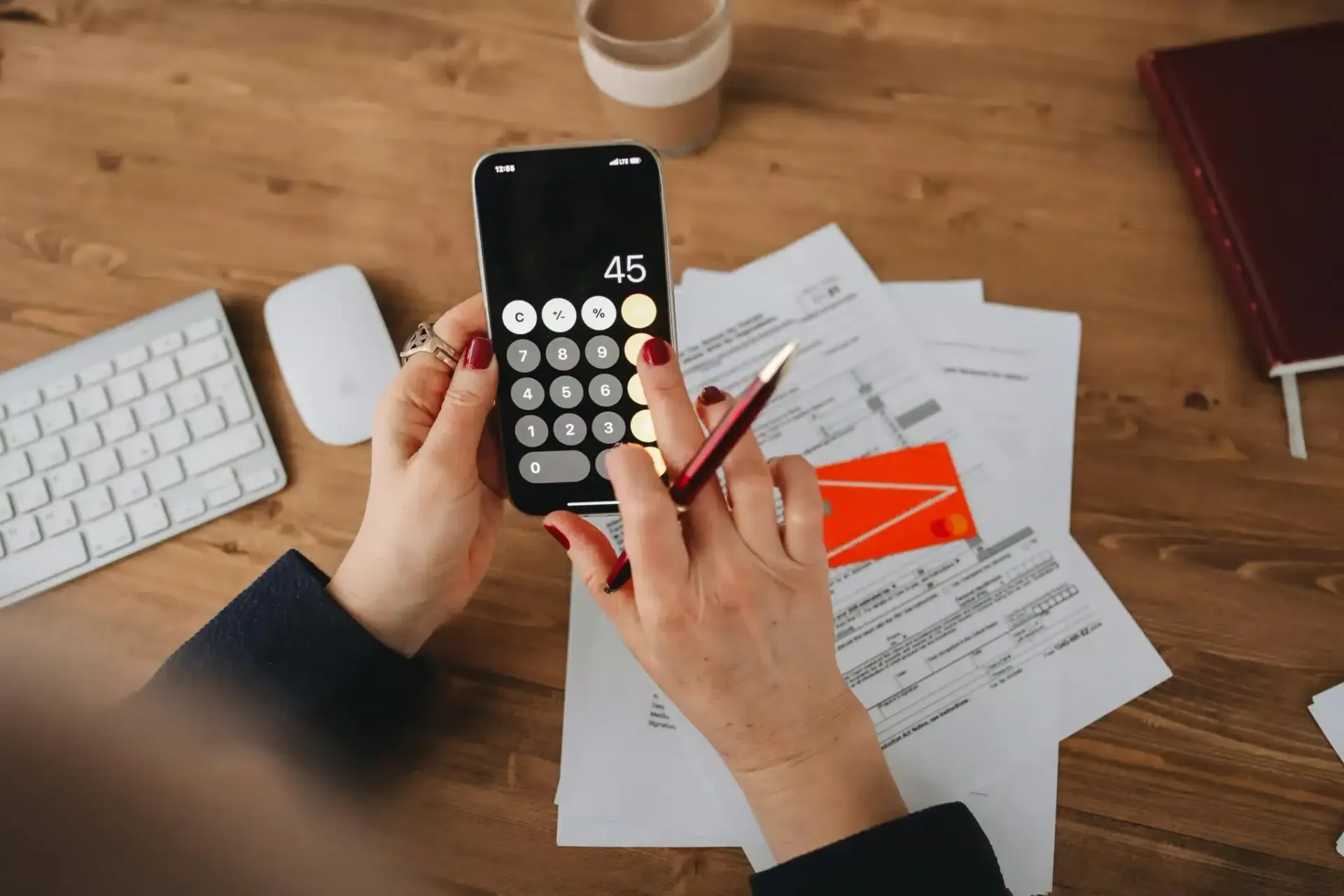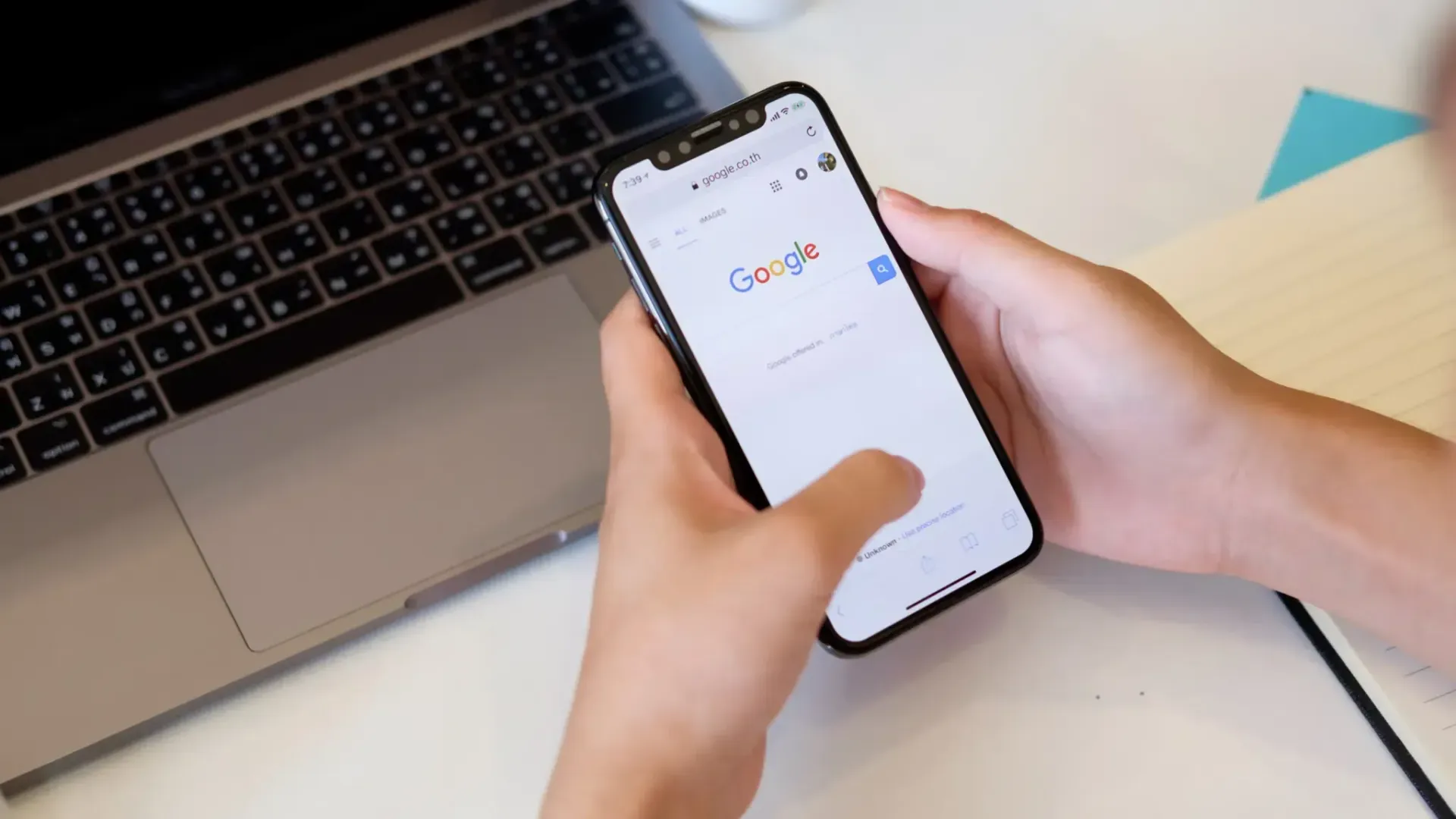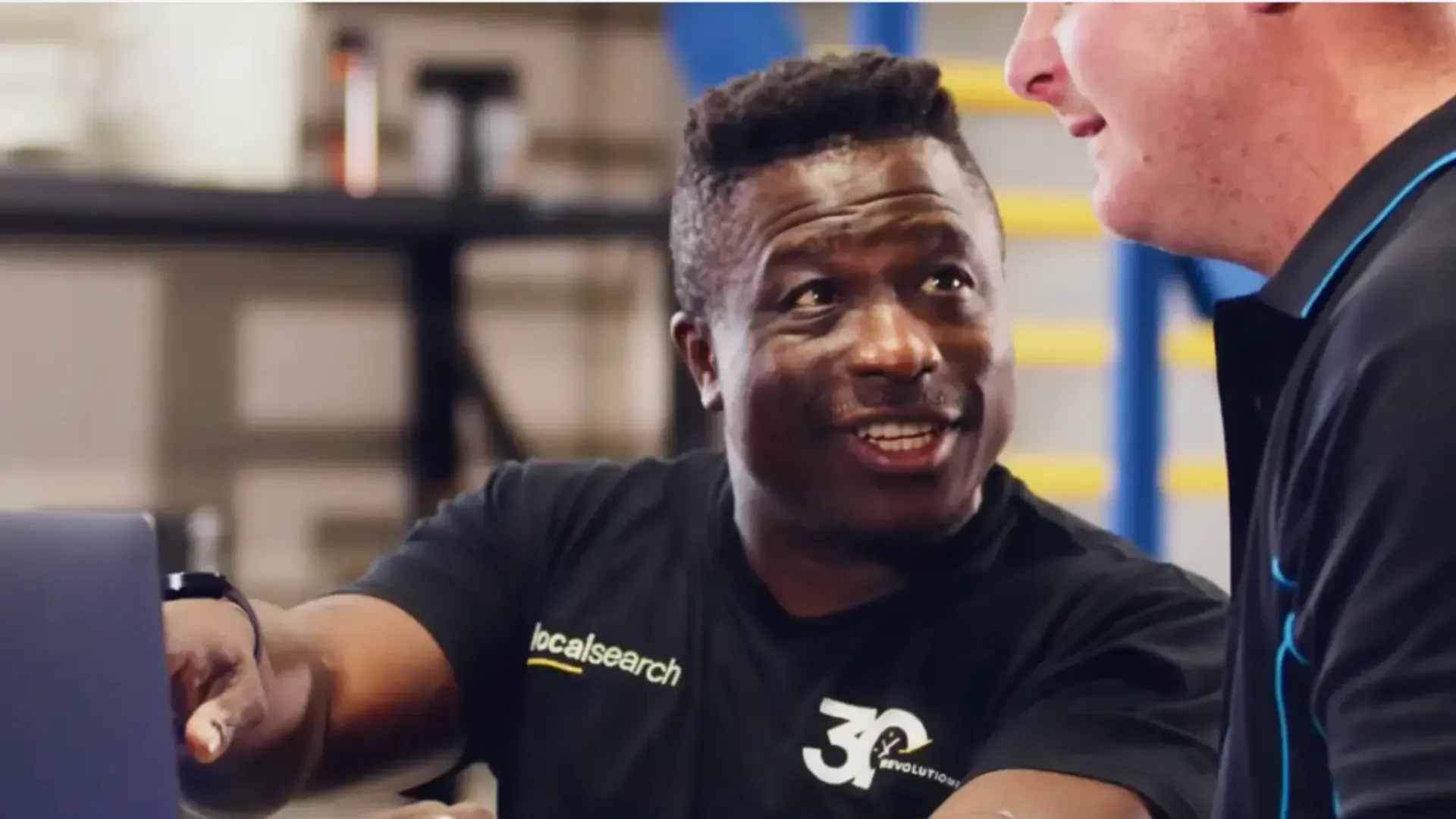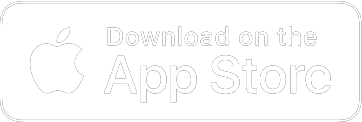UX design and website conversions… is there a link?
In this article
Related Articles
Tips to grow your business
from the experts
Listen to the Help Me Grow My Business Podcast on your favourite listening platform.
Sarah: It’s one thing to have a pretty website.
Katrina: But, do you know how to have a pretty website that works?
Sarah: Ensuring your website provides a good user experience is so important, it’s an entire job for people like Lead UX-UI Designer Rieze Rothmann…
Katrina: Who just so happens to be here to share her top tips.
Sarah: Let’s get into it.
Sarah: Thank you so much for joining us today, Rieze.
Rieze: Thanks for having me.
Sarah: I feel like if you have jumped on LinkedIn or Seek, even Facebook at the moment, you have seen the terms UX and UI pop up somewhere, and it’s probably, user experience is probably one of the big trending topics in every type of marketing community at the moment. In design, in SEO, like it’s important for everything at the moment, but unless you are actually in those worlds, you’re probably a bit confused about what it actually has to do with making newer better websites. So Rieze, can you please tell us a little bit about what you do as a UX-UI designer and the sort of experience you’ve had to build to actually do what you do.
Rieze: Obviously, the most important distinction between UX and just normal design is the fact that critical thinking is at the forefront of your designs, always thinking what’s the purpose of the design, what’s the user’s expectations and what you are trying to convey. So really it is combining design with the psychology of users using technology. Yeah, just making it a good and easy experience for them.
Katrina: So, if we break down what a UX-UI designer actually does, what does this actually mean?
Rieze: As a UX-UI designer, obviously there’s different types of scenarios where you will be designing. So firstly, you have client jobs, where you would be typically designing a website for a client and in that regard, you would look at the target audience, you would look at the market and you would look at what they are trying to achieve with their website, what type of call to actions. And then the second type of design is product design and that is more when that is kind of more like corporate. Let’s say you have a product that let’s say Stripe or a payment software and then you’ll just be thinking about everything to do with finances but when it’s with a client it’s a little bit different because it’s like a totally different target audience. The most important thing is to have the distinction between; designing for a purpose, which is number one and always the most important, like that always trumps design. So, if something can look as pretty as possible but if it doesn’t have a purpose, no good. So that is the most important thing. And then the second thing is, yeh just understanding like the how, the why and what, like why are you designing this and what is like the end result you are trying to achieve.
Sarah: I think something that people aren’t aware of when it comes to user experience design is that it involves the designer and the developers working together but there is then a content person then jumping in and getting involved it’s no longer like a traditional workflow of ok so the designer does this, the writer then goes in and does this and then the developer does this it’s everyone kind of has to communicate to make sure the end result for the user actually makes sense, so everyone has that different experience. Do you find that is something that is a little bit more challenging than a straight normal designer without that user experience background?
Rieze: So, yes definitely, because there are a lot of limitations when it comes to designing for IT, obviously you have to think of not only response of web and mobile but obviously like an app works totally different to, you know a website, and also working with developers gives you that technical insight that as a normal designer you probably might not experience and also working for different industries, because now, with design or UX, UI specifically, you can work in any industry you have to not only understand the design behind it but you also have to understand the industry’s needs. So for instance, if you’re designing a software or an app for a finance company you have to know what the finance company’s goals are and what their users’ goals are. So, yeh, it’s once again just combing that critical thinking, psychology with your designs, yeh I wanted to mention with that, that’s also important understanding or working with content and understanding what they try to convey, you can’t just like, put text in there and make it look pretty, once again you have to like the flow of how they are thinking and what they are trying to say and how you are visually interpreting that.
Sarah: Ok, so, physical buildings, they obviously need ramps and lifts and everything like that to be inclusive for the general public, but a website needs that sort of stuff as well right? I know there’s things like the World Wide Web Consortium which is actual regulations and best practices in place for ensuring you have an inclusive website, but what do website owners need to be looking at to ensure their website can be easily used by people with visual and other impairments?
Rieze: You know, the psychology behind a user sitting and using something, it’s all to do with where your eye goes, what stands out, what doesn’t stand out, you are simply not going to click on it if it isn’t the right colour or size or your missing it, you know, having those really clean visual cues for users to guide them and then you know, for someone that is let’s say colour blind I actually saw the other day, there is this new, it’s not a widget really, but it is something you can load up onto your website and you click it and then it will turn the whole website into like a monochrome website for them.
Katrina: Oh wow.
Rieze: And so it will take the colours and it will, yeh change it into the different greys and blacks so it is easy for them to know and everything isn’t just sort of only like a flack colour. A good thing to think about, I don’t think a lot of people do actually think about that, but yeh general rule of thumb, you know, colours, having good contrast on your website in terms of colour usage because that alone will help people. Sizing, can’t be too small and yeh, another thing to consider which is also very useful is tool tips, nowadays you know, you really want to think about intuitive design and you want to guide the user, you do not want them to try to look for something or get frustrated, and there’s so many cool little UI tips and tricks and animations and Dev work they can do behind the scenes to really inform the user of what experience you’re expecting them to have on their products as well. Then another thing is consistency, obviously comparing what other websites are doing, you know the big guys like Facebook, Google and you don’t have to redesign the wheel every time, you can just steal a few tips there, change it a little bit or you know.
Katrina: There is no harm in looking at what your competitors are doing, is there.
Rieze: Exactly, no.
[Laughing]
Katrina: Speaking of all these considerations of people building websites, what are the top accessibility issues you see on websites?
Rieze: Oh, colour usage is probably number one, less is more and making sure that whatever you want the user to do, needs to be prominent, it shouldn’t have all of these competing elements too much movement, so much sensory overload when it comes to websites nowadays.
Sarah: Contrast is a super interesting point, because I know personally I’ve seen, let’s say a lime green website and they have got white font over the top and I found it really tricky to read and I have reached out to the business owner or we have been in conversation or whatever, and I have mentioned I can’t read it but they absolutely love it, which comes down to a really important step in the UX process which is user testing. Can you tell us a little bit about this?
Rieze: So there’s two ways of doing this, which is what we use, in-house. First of all creating your user persona, so really, and this, you could really call this target audience, who do you think is going to use this product or website and what you want them to find and then kind of put yourself in their shoes and, you know, how, what do you think they expect to find. And then there is another way is you actually physically create something you either do the AB testing which is the easy way without using too many resources or you could physically get a pilot group or a group of user testers and you can present your product to them and see how they interact with it, take notes from that and then adapt your product accordingly. At the end of the day I still have a bias, you know, like when I am designing, I know what I like and what works for me and what my mind thinks, but when I have put some of my designs in front of other users and I can see how they work with it I am like, oh ok that’s interesting, I didn’t think of that, why did they find that so hard.
Sarah: I think that is such an important tip for business owners in remembering that what your producing whether it is the website or you are producing an app or graphic design materials, it needs to resonate with your audience, not necessarily you because yes, you are the one providing the product but what resonates with them and gets them engaged with that could be something completely different. And it is important to kind of take that back seat to having your heart set on something just because you like it or it is actually going against something you want to do. So that is a great thing to keep in mind that you mentioned.
Katrina: So we’ve spoken today a lot about of common mistakes and errors that you see on websites from a lot of UX perspective, but what is one that really sticks out to you? What is one of the most common mistakes you see business owners making on websites they have designed themselves?
Rieze: The number one thing that I normally find with websites that aren’t effective is, they want to put so much information on there but they are not actually thinking what the user is trying to find. It is like, I just want to put everything on there and show them but they are not really thinking about ok now I’ve informed the user of this service or this product, what do I actually, what action do I want them to take and I think that is probably number one thing like CTA call to action buttons are misused or not used at all, people try sometimes to be too unique, you know, it’s like I don’t want my websites buttons off this list because everyone’s buttons look like this, there is a reason why everyone’s buttons look like that.
Sarah: Exactly.
Katrina: Yeh.
Rieze: You have to consider there’s like a difference, being unique and creating something that the user wouldn’t necessarily know how to interact with.
Sarah: Remembering the why are you doing something.
Rieze: Yeh, what purpose are you trying to achieve, your websites online cause you want someone to go on there look at your projects and call you and book in a consult.
Katrina: Ok well Rieze, thank you so much for joining us today. If you do have any questions for Rieze you could probably reach out to her over on her LinkedIn profile.
Sarah: Or you could also shoot Katrina and I a message over at The Help Me Grow My Business Podcast Instagram or Facebook.
Katrina: I think that’s everything we have time for today.
Sarah: Thank you Rieze.
Rieze: All good, thanks lovely ladies.


